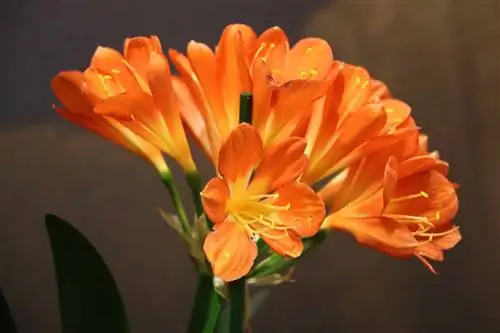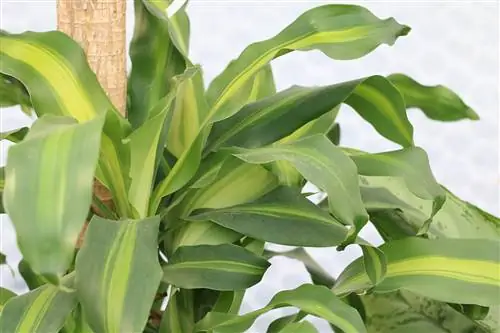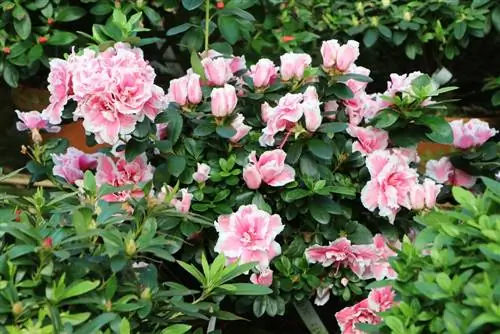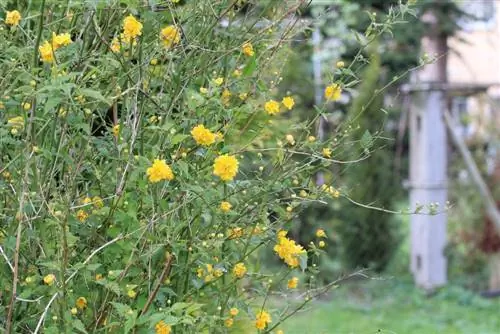- Author admin [email protected].
- Public 2023-12-17 03:39.
- Last modified 2025-01-24 12:45.
Houseplants often beautify not only homes, but also offices. In order for the plants to be enjoyed for a long time, they should have some characteristics that make them easy-care office plants.
Characteristics of office plants
- easy to care for (water and fertilize little, hardly cut)
- hardly make any mess (withered flowers don't fall down, repot rarely)
- robust (resistant to pests and diseases)
- improve the indoor climate (absorb pollutants from the air and release oxygen)
- suitable for holiday replacements (forgive care errors)
Office plants with A & B
Aloe vera (real aloe)
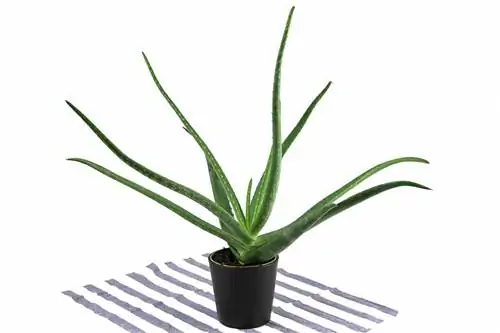
- Origin: probably Arabian Peninsula
- Characteristics: Rosette plant, thick, fleshy leaves with thorns, medicinal plant
- Flowering: January to February, yellow to red
- Location and substrate: sunny, warm, dry, well-drained substrate
- Care: water and fertilize little, keep drier in winter, repot every two to four years
- Diseases and pests: robust, watch out for root rot if there is too much moisture, possibly lice
- Pruning: Remove faded flowers
Note:
In the summer months the aloe can go outdoors.
Tree Friend (Philodendron)

- Origin: Central and South America, Tropics
- Characteristics: climbing, but also suitable as a hanging plant, green to green-white variegated leaves
- Flowering: rarely blooms
- Location and substrate: bright, but not full sun, partially shaded, warm, loose, nutrient-rich substrate
- Care: Offer climbing assistance, keep moist during the growing season and fertilize every two weeks, repot every one to two years
- Diseases and pests: robust, possibly watch out for leaf damage from too much sun or root damage from too much moisture
- Pruning: cut back bare plants
Birch fig (Ficus benjamina)
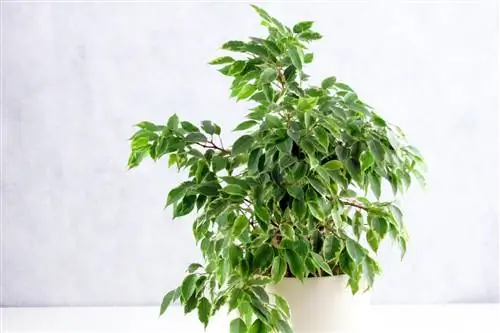
- Origin: East Asia to Australia
- Characteristics: Growth resembles a small deciduous tree, green to variegated leaves, brown shoots
- Location and substrate: bright, warm, but not too sunny, leaf drop when changing location, permeable, sandy to gravelly substrate
- Care: water and fertilize regularly in summer, repot every two to four years
- Diseases and pests: scale insects
- Cut: shorten if necessary
Bow hemp (Sansevieria trifasciata)
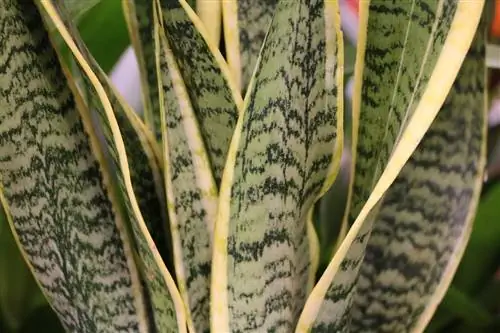
- Origin: Africa
- Characteristics: upright growth, large, hard leaves, green or green-white, forms a rhizome
- Flowering: on older plants, May and June, whitish green panicle blossom
- Location and substrate: warm, sunny, dry, well-drained, sandy substrate
- Care: keep mostly dry, fertilize rarely, repot only when necessary
- Diseases and pests: considered robust, watch out for root rot if the location is too wet and spider mites if the location is too dry
Office plants with E & F
Dieffenbachia (Dieffenbachia maculata)
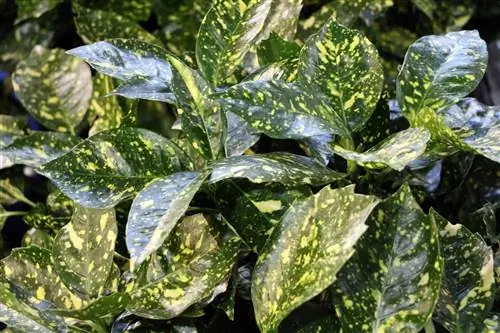
- Origin: Central and South America
- Characteristics: Green plant, green leaves with white pattern, older plants can form stem
- Flowers: very rare, June and July, white or yellow
- Location and substrate: bright, warm, high humidity, protection from midday sun necessary, permeable, nutrient-rich substrate
- Care: keep moist, spray leaves, fertilize every two weeks, repot every two years
- Diseases and pests: pay attention to waterlogging, as well as fungus gnats, mealybugs and spider mites (if the location is too dry)
Note:
The Dieffenbachia is highly poisonous in all parts of the plant, this also applies to plant sap that escapes. It is better to wear gloves when working on the plant.
Ivy (Hedera Helix)
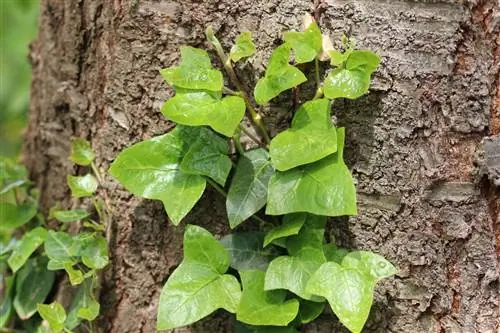
- Origin: native species, room ivy is a cultivated variety
- Characteristics: evergreen, dark leaves with whitish markings, long shoots, trailing, climbing or hanging
- Flower: rarely blooms indoors
- Location and substrate: light to partially shaded, rather cool, permeable substrate
- Care: water and fertilize regularly, repot every two to three years
- Diseases and pests: spider mites and scale insects if the conditions are too dry
- Cut: can be easily cut back
Epipremnum(Epipremnum pinnatum)
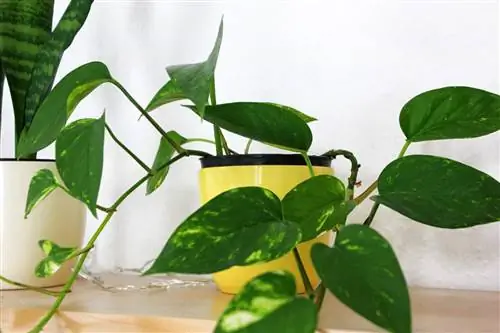
- Origin: Southeast Asia to Australia
- Characteristics: climbing or hanging, forms long shoots, large, green, patterned leaves, filters toxins from the air in the office
- Location and substrate: light to partially shaded, warm, increased humidity, permeable substrate
- Care: water and fertilize regularly, repot every two years
- Diseases and pests:
- Pruning: shoots that are too long can be shortened
Single leaf (Spathiphyllum wallisii)
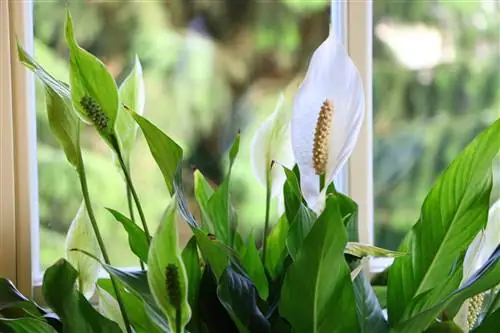
- Origin: South America
- Characteristics: persistent, clump-like growth, can be divided, leaves grow upright to overhanging
- Flowering: June to September, white
- Location and substrate: light to shady, high humidity, warm, permeable, nutrient-rich substrate
- Care: keep moist, fertilize regularly, repot every one to two years
- Diseases and pests: possibly lice
Elephant foot (Beaucarnea recurvata)
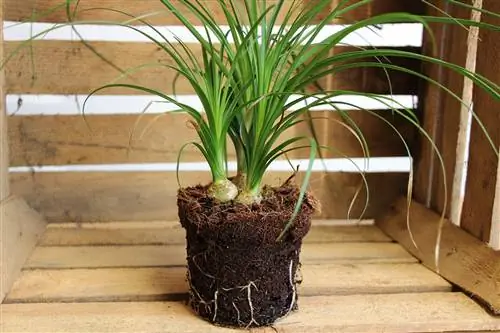
- Origin: Mexico
- Characteristics: brown trunk with thickened base, grassy tuft of leaves
- Flowering: rare, only when old
- Location and substrate: full sun, warm, no drafts, permeable, loose, sandy soil
- Care: water and fertilize little, repot only if necessary
- Diseases and pests: scale insects, spider mites if the air is too dry, possibly mealybugs and mealybugs
- Pruning: Cutting back the trunk leads to the formation of side shoots
Window leaf (Monstera deliciosa)
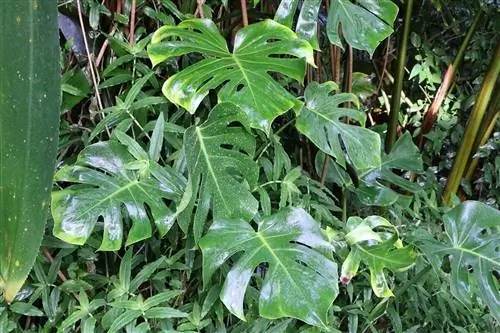
- Origin: Central and South America
- Characteristics: climbs, large leaves with holes or slits, forms aerial roots and very long shoots
- Flowering: only on very old plants
- Location and substrate: bright, warm, the plant requires a lot of space in the office in the long run, nutrient-rich substrate
- Care: water and fertilize regularly, repotting becomes difficult over the years
- Diseases and pests: robust, when the air is dry, scale insects or spider mites
- Cutting: plants that are too large can be shortened
Office plants G to S
Gold Fruit Palm (Dypsis lutescens)
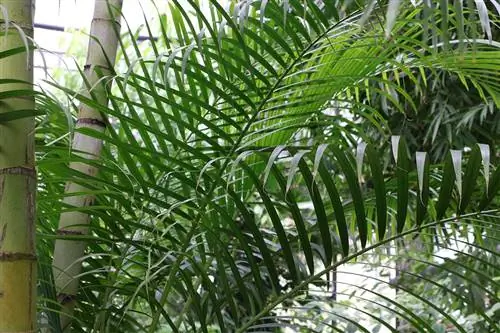
- Origin: Madagasgar
- Characteristics: large, pinnate leaf fronds, stem-forming
- Location and substrate: light to partially shaded, warm, high humidity, nutrient-rich soil
- Care: keep moist, fertilize regularly, initially repot annually
- Diseases and pests: Lice and spider mites if the conditions are too dry
Green Lily (Chlorophytum comosum)
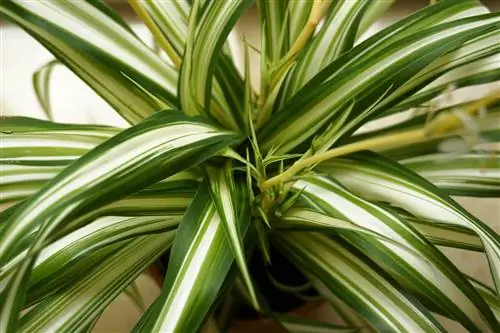
- Origin: South Africa
- Characteristics: elongated green or green-white leaves, forms runners, grows overhanging, forms storage organs on the roots
- Flowers: white, on long shoots
- Location and substrate: sunny to partially shaded, also tolerates shade, loose to loamy soil
- Care: easy to care for, water and fertilize as needed, repot annually
- Diseases and pests: robust, possibly lice
- Cut: Kindling and dead flowers can be removed
Kentia palm (Howea forsteriana)
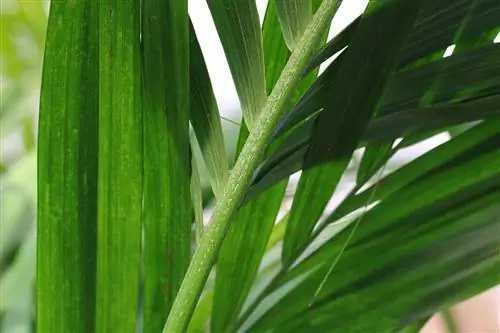
- Origin: Lord Howe Island
- Characteristics: overhanging, green, pinnate leaf fronds with long stems
- Location and substrate: light to shady, high humidity, warm, acidic, sandy substrate
- Care: water moderately, fertilize regularly, repot every four years
- Diseases and pests: lice, spider mites, thrips
Klivia (Clivia miniata), belt leaf
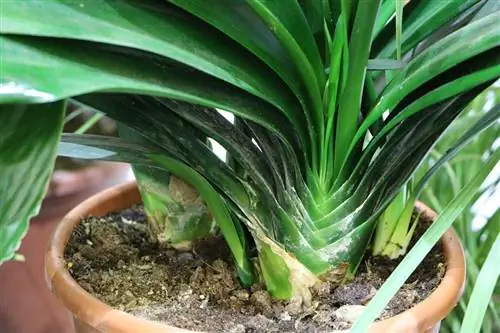
- Origin: South Africa
- Characteristics: long, narrow, dark green leaves, forms rhizomes
- Flowering: February to May, on long shoots, orange funnel flowers
- Location and substrate: bright, without direct sun, nutrient-rich, permeable substrate
- Care: keep moist, fertilize regularly, repot every three to four years
- Diseases and pests: possibly mealybugs
- Pruning: Remove spent flowers before fruiting
Cobbler's palm (Aspidistra elatior), butcher's palm
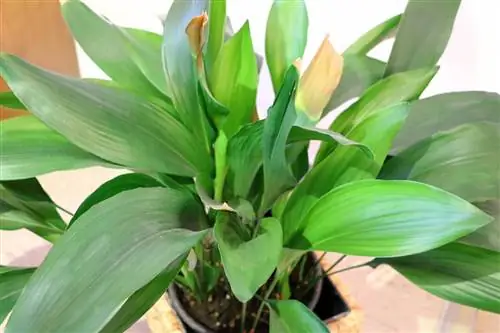
- Origin: Asia
- Characteristics: clump and rhizome forming, long, dark green to light striped leaves, stemless
- Flowers: rare, directly above the ground
- Location and substrate: light to shady, evenly warm, well-drained, slightly sandy soil
- Care: easy to care for, water regularly, fertilize monthly, repot every three to four years
- Diseases and pests: scale insects, spider mites, thrips
Radiant Aralia (Schefflera arboricola)

- Origin: Taiwan
- Characteristics: fingered green or light mottled leaves on long stems, branched shoots
- Location and substrate: light to partially shaded, avoid drafts, permeable, loose soil
- Care: keep moderately moist, fertilize weekly, repot young plants annually
- Diseases and pests: robust, watch out for spider mites and lice
- Cut: compatible with cutting, specimens that are too large can be shortened
Office plants U to Z
African Violet (Saintpaulia ionantha)
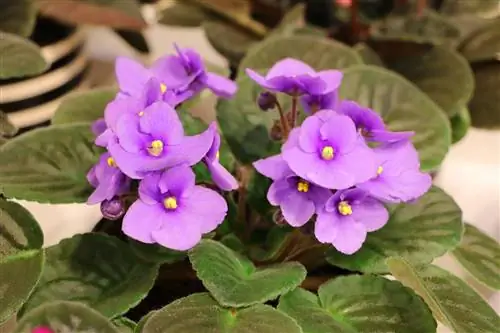
- Origin: Tanzania
- Characteristics: cushion-forming, small dark to olive green leaves, hairy
- Bloom: all year round in many colors
- Location and substrate: bright, but not sunny, increased humidity, no drafts, warm, permeable potting soil
- Care: keep moist, but do not water over the leaves, do not spray, fertilize regularly, only repot when the pot is too small
- Diseases and pests: mites, thrips, lice
- Pruning: Remove faded flowers
Yucca palm (Yucca elephantipes), giant palm lily

- Origin: Mexico, Central America
- Characteristics: stem-forming, leafy clusters with long, thin leaves, overhanging
- Flowers: rare indoors, only on plants over ten years old, white
- Location and substrate: full sun to partial shade, well-drained, sandy soil
- Care: water little, keep mostly dry, fertilize every two weeks, repot every two to three years
- Diseases and pests: in dry air, spider mites and scale insects
- Cutting: tolerates pruning, shortening the trunk to the desired height
Zamie (Zamia furfuracea)
- Origin: Mexico
- Characteristics: fern-like leaves emerge from a short, thickened stem base
- Bloom: rare in the room
- Location and substrate: full sun to partial shade, loose, well-drained soil
- Care: water thoroughly, but not too often, fertilize monthly, repot only if necessary
- Diseases and pests: spider mites, scale insects
- Pruning: remove dead leaves
Zimmerlinde (Sparmannia africana)
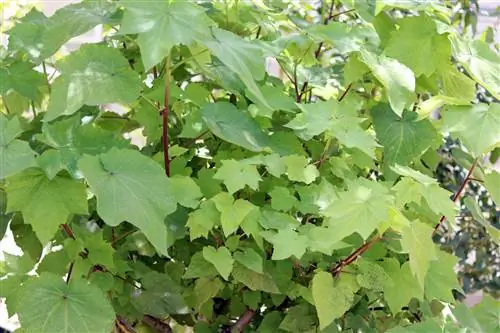
- Origin: Africa
- Characteristics: bush-shaped growth, woody shoots, large, heart-shaped leaves
- Flowering: November to May, white
- Location and substrate: light to shady, airy, cool, high humidity, loose, nutrient-rich substrate, repot annually
- Care: water and fertilize regularly
- Diseases and pests: possibly lice of various kinds
- Pruning: annual pruning keeps growth in check

